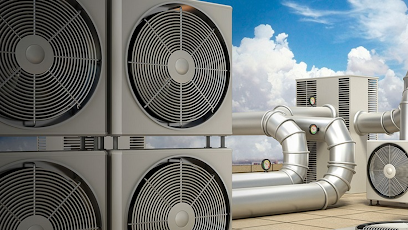HVAC engineering is mostly related to summer air conditioning and winter space heating. However, HVAC systems can also be employed to enhance indoor air quality with wise design choices. Modern design methods place a high priority on energy efficiency, which is fantastic from an economic perspective but should not be neglected when considering human health and comfort.
Utilizing HVAC Technology to Manage Air Pollutants
There are numerous sources of air pollution in indoor spaces, some of which are quite hazardous to people. For instance, freshly assembled furniture produces volatile organic compounds, and combustion appliances generate carbon monoxide, a deadly gas. To prevent these compounds' detrimental impacts on human health, it is crucial to keep them under control.
Proper ventilation must be built into HVAC systems in order to avoid the buildup of air pollutants inside of buildings.
- According to the US Environmental Protection Agency, indoor air is typically 2 to 5 times more contaminated than outdoor air.
- Consequently, resupplying indoor air on a regular basis is a straightforward strategy to reduce the number of contaminants.
- Filtering and air purifiers can be used in conjunction with adequate ventilation to further enhance indoor air quality.
HVAC engineering goes beyond simply using the weather to determine how to heat and cool inside environments. Interior air quality is essential for creating comfortable and healthy indoor environments. Not only must indoor rooms have a comfortable temperature, but also clean air and a low humidity level.
Suggestions from HVAC Engineering for Indoor Air Quality
Having HVAC equipment of the proper capacity, which achieves excellent control over temperature and humidity, is a straightforward tip to improve air quality. Think about the negative effects of an enormous air conditioning system, for instance:
- Large air conditioners cool indoor air too quickly, leaving insufficient time for moisture removal.
- As a result, you experience a refrigerator-like environment that is cold and humid.
- The high velocity creates a chilling effect if the air conditioner also has a large fan.
On the other hand, a properly sized air conditioner removes humidity more efficiently and without creating air drafts. A skilled HVAC engineering company may recommend the proper capacity heating, ventilation, and cooling equipment based on the requirements of your building.
The recommendation is to maintain relative humidity between 30% and 60% to maintain good indoor air quality for occupants. Outside of this range, there are a number of detrimental effects:
- Dust and viruses can spread more readily in conditions of extreme dryness because they stay in the air for longer. Additionally, dryness can irritate the skin, eyes, and respiratory system.
- Mold and dust mites thrive in environments with too much moisture, which can irritate people and trigger allergies.
When humidity levels are out of control, the structure as a whole may suffer since many building elements are harmed by excessive dryness or dampness. Your property can eventually require pricey repairs.





No comments:
Post a Comment